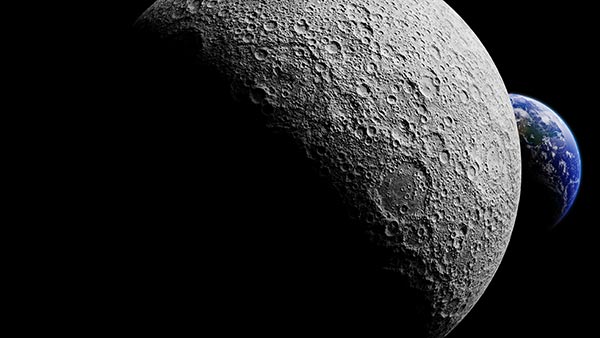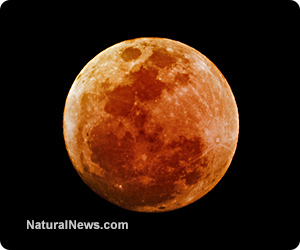Latest NASA experiment suggests signs of life could be found on Saturn and Jupiter’s icy moons
07/26/2024 / By Kevin Hughes

A new experiment has led scientists to believe that it is possible to find surviving signs of life on the icy ocean moons of Enceladus and Europa.
Enceladus, one of Saturn’s 146 known moons, and Europa, one of Jupiter’s 95 moons and among its four large Galilean moons, are believed to accommodate enormous liquid water oceans under their frozen surfaces. Scientists have long speculated that they could discover observable trace molecules surviving in these frozen soups.
If this is the case, then scientists believe they can find “biosignatures” of life on these moons, or complex organic molecules that make up the building blocks of life as people know them, such as amino acids and nucleic acids.
Recent research is providing scientists with hope that at least some of the biosignatures of life could survive if they are preserved in the icy shells of the moons.
These molecules could be resting close to the surface – possibly close enough for future robotic landers to dig them free. And in Enceladus, scientists believe diggers might not even be needed, since the biosignature molecules on that moon could be surviving in shallower ice than on Europa.
“Based on our experiments, the ‘safe’ sampling depth for amino acids on Europa is almost eight inches at high latitudes of the trailing hemisphere, the hemisphere opposite to the direction of Europa’s motion around Jupiter, in the area where the surface hasn’t been disturbed much by meteorite impacts,” research leader Alexander Pavlov of the National Aeronautics and Space Administration’s (NASA) Goddard Space Flight Center in Greenbelt, Maryland, said in a recent statement.
The team’s research paper was published on July 18 in the journal Astrobiology. The researchers noted that “subsurface sampling is not required for the detection of amino acids on Enceladus – these molecules will survive radiolysis, breakdown by radiation, at any location on the Enceladus surface less than a tenth of an inch (under a few millimeters) from the surface.”
Plumes that erupt through the icy shell of Enceladus could also mean orbiting robotic missions will be able to take these biosignature molecules from around the Saturnian moon without the need to visit the surface.
Frigid temperatures, lack of atmosphere diminish hopes of finding life on Europa and Enceladus
Although Europa and Enceladus are repeatedly mentioned as two of the most possible worlds to hold life somewhere in the solar system, this life is very unlikely to dwell at the surface of these moons. (Related: NASA scientists quietly announce that Enceladus, a Saturn moon, can support life.)
That is because not only are they nearly atmosphere-less and frigid, but they are also walloped by energetic particles and radiation from the sun and cosmic rays from powerful events such as supernovas outside the solar system.
Moreover, both Europa and Enceladus are thought to have liquid water oceans below their thick surfaces, which are like icy shells. Those oceans would be therefore protected from such particles and warmed by geothermal heat produced by the gravitational pull these moons’ parent planets and their sibling moons apply on them.
This would mean that life could live on them provided that these subsurface oceans have the correct chemistry and a source of energy. To examine this, Pavlov and his colleagues analyzed amino acids as they underwent radiolysis.
Although amino acids can be made by both living things and non-biological processes, finding them on Europa or Enceladus would be a possible sign of life simply because they are important to life on Earth as an essential element of protein building.
Amino acids could be attained from the deep oceans of these moons thanks to geyser activity, or by the stirring motion of the icy outer shells themselves.
To assess the survival of amino acids on these worlds, the team mixed samples of amino acids with ice chilled to around negative 321 Fahrenheit in sealed, airless vials and bombarded them with gamma-rays, a kind of high-energy light, at different doses.
Since the oceans might hold microscopic life, they also examined the survival of amino acids in dead bacteria in ice. Finally, they tried samples of amino acids in ice mixed with silicate dust to study the probable mixing of material from meteorites or the interior with surface ice.
The experiments presented pivotal data to determine the rates at which amino acids break down, known as radiolysis constants.
With these, the team employed the age of the ice surface and the radiation environment at Europa and Enceladus to compute the drilling depth and locations where 10 percent of the amino acids would survive radiolytic destruction.
Although experiments to examine the survival of amino acids in ice have been made before, this is the first to use lower radiation doses that don’t completely break apart the amino acids, since just changing or degrading them is enough to make it impossible to determine if they are probable signs of life.
This is also the first experiment using Europa/Enceladus conditions to examine the survival of these compounds in microorganisms and the first to test the survival of amino acids blended with dust. The team discovered that amino acids degraded quicker when mixed with dust but slower when coming from microorganisms.
Follow Space.news for more news about signs of life in outer space.
Watch the video below about the research showing the possibility of life on Jupiter.
This video is from the CleanTV channel on Brighteon.com.
More related stories:
NASA scientist is “absolutely certain” there is ALIEN LIFE in the universe.
Jupiter’s Europa may have pockets of water that could support alien life – study.
Search for origin of life intensifies as NASA probes alien oceans on moons in the outer solar system.
Life on the ice: Extraterrestrial life on ice worlds could look like Hawaiian underwater creatures.
Space probe records Saturn “singing” to its weirdest moon.
Sources include:
Submit a correction >>
Tagged Under:
alien life, biosignatures, breakthrough, Chemistry, cosmic, discoveries, Enceladus, Europa, extraterrestrial life, future science, Jupiter, moons, real investigations, research, saturn, Space, space exploration, space tourism
This article may contain statements that reflect the opinion of the author
RECENT NEWS & ARTICLES
Cosmic.News is a fact-based public education website published by Cosmic News Features, LLC.
All content copyright © 2018 by Cosmic News Features, LLC.
Contact Us with Tips or Corrections
All trademarks, registered trademarks and servicemarks mentioned on this site are the property of their respective owners.




















